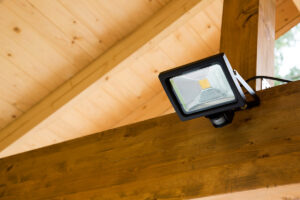
What Is A Beam Angle?
A beam angle measures the distribution of light from a lighting source. It is a helpful lighting tactic that helps people illuminate their spaces, which can be challenging and daunting. Almost all modern lighting projects involve light spread and beam angle calculations.
Significance Of Beam Angles In Lighting
The beam angle is crucial in determining the light’s coverage area. For example, a 60-degree bulb in the middle of a 34-foot-high ceiling is needed to light a 40 by 40-square-foot space. You can also have two 60-degree lights mounted 10 feet from the center of a ceiling that is 17 feet high. The height of the ceiling and the distance between lighting fixtures are key variables that impact beam angles.
Tips For Choosing Beam Angles
To identify the best beam angle for your needs and commercial property, you must consider the following factors:
• Building Type: For residential properties, wide-angle fittings in the middle of a room are frequently acceptable because residential areas require even illumination on a room-by-room basis. Wide-spread medium- to narrow-angled lighting is commonly utilized in commercial properties.
• Light Fixtures: Multiple light sources in a light fixture can change the beam angle of a light bulb. For instance, A hanging pendant reduces the angle, whereas a recessed light fixture may increase it.
• Lighting Type: Many different lights are on the market, including modern LEDs and more conventional models. Others, like accent and task lighting, call for tighter beam angles, while some, like ambient lights, call for large beam angles.
• Ceiling Height: Since light strength decreases the further you are from the source, higher ceilings will result in weak illumination at the floor level. Ceilings in homes or apartments are frequently 10 feet or less. In such properties, a wide-angled light will be sufficient for complete room coverage.
ELEVATE YOUR LIGHTING WITH GREEN WAY LIGHTING
At Green Way Lighting, we genuinely value the importance of meeting the needs of our customers. Whether you are searching for lighting solutions for your commercial building or residential property, we have the options available to fit all your needs. Reach us on Facebook, Twitter, and LinkedIn. You can also contact us on our website!

